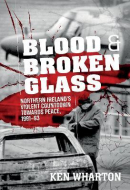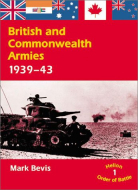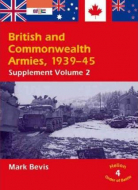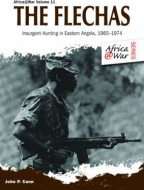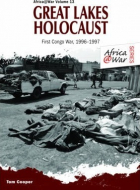
- Agriculture
- Architecture & Design
- Arts & Photography
- Biography
- Business
- Calendars and Diaries
- Childrens (All)
- Childrens (Illustrated)
- Childrens (Picture flats)
- Childrens (Te Reo)
- Classics
- Cooking, Food & Drink
- Craft & Hobbies
- Design (Art / Graphics)
- Design (Interiors)
- Education
- Fashion
- Fiction & Literature
- Fiction - Young Adult
- Gift Ideas
- Health & Wellbeing
- History
- Home & Garden
- Humour & Gift
- Instead of a Card Poems
- Military
- Music
- New Zealand
- NZ (History)
- NZ (Landscapes)
- NZ (Pictorial)
- Poetry
- Reference
- Religion & Faith
- Science & Nature
- Sport & Recreation
- Stationery
- Taschen : 40th Anniversary Edition
- Taschen : BA Basic Art
- Taschen : BU Bibliotheca Universalis
- Te Reo Māori
- Transport
- Travel
Military (455)
|
90 Years of the Indian Air Force
ISBN: 9781915070586 Author: Sanjay Badri-Maharaj Publisher: Helion & Company The Indian Air Force was formed on 8 October 1932. Tested in the Second World War and in subsequent India-Pakistan conflicts, the force enters its 90th year as ... The Indian Air Force was formed on 8 October 1932. Tested in the Second World War and in subsequent India-Pakistan conflicts, the force enters its 90th year as one of the largest air forces in the world. However, it also faces enhanced challenges in the region as it seeks to replace legacy systems, upgrade its combat and support assets and to also expand its force levels. Despite many problems the IAF is facing the second decade of the 21st century with an increasingly rationalized doctrine, an improving air defense network, an array of new ordnance and electronics and a rejuvenated combat fleet. 90 Years of the Indian Air Force examines the Indian Air Force as it exists today and its moves towards modernization. Each element of the IAF, along with the current inventory of aircraft as they relate to its combat squadrons, its transport fleet, its helicopter forces and its training and electronic warfare and surveillance assets are discussed. In addition, the IAF's air defence network and its large SAM inventory are detailed along with the fledgling Defence Space Agency which operates with Air Force assistance. India's existing space assets are discussed as they relate to airspace surveillance and management. The ongoing modernization of the Indian Air Force is examined in terms of new acquisitions and the upgrading of older but viable platforms. Similarly, the ongoing efforts to improve the Air Defence network, ISTAR systems, AEW platforms and new SAMs are analyzed. Moreover, the focus on indigenous designs in respect of radars, aircraft, ordnance and SAMs are explored in detail. Two separate elements of this effort are discussed - license production of foreign designs and a renewed emphasis on local designs for combat aircraft, trainers, helicopters, weapons and SAM, this local production being key to the IAF's future modernization. Bind: paperback Pages: 80 Dimensions: 210 x 298 mm Publication Date: 16-06-2022 |
$49.99 |
|
|
Charles Xs Wars Volume 2
ISBN: 9781915070302 Author: Michael Fredholm Von Essen Publisher: Helion & Company This three-volume series will describe and analyses the ‘Swedish Deluge’ (potop szwedski), the devastating 1655–1660 series of wars fought between Sweden,... This three-volume series will describe and analyses the ‘Swedish Deluge’ (potop szwedski), the devastating 1655–1660 series of wars fought between Sweden, the Polish-Lithuanian Commonwealth, Brandenburg-Prussia, Muscovite Russia, Transylvania, Cossack Ukraine, the Tatar Khanate of Crimea, and the Holy Roman Empire during the reign of Swedish King Charles X Gustavus, an experienced former general from the Thirty Years’ War. By invading the Polish-Lithuanian Commonwealth, King Charles saw an opportunity to put an end to the Polish King’s claim to the Swedish throne and to gain additional territories which would enable him to control the Baltic Sea maritime trade. The book focuses on the Swedish–Commonwealth war, which provoked the political and military collapse of the Commonwealth. However, since this conflict cannot be disentangled from the simultaneous wars between the Commonwealth and Muscovy, from 1654 to 1667, and between Sweden and Muscovy, from 1656 to 1661, they are described as well. Meanwhile, the Ukrainian cossacks fought for freedom from what they perceived as the oppression of the Commonwealth. Michael Fredholm von Essen presents new research on a war previously seldom described in English. Moreover, the book explains the continued development of the Swedish Army after the Thirty Years’ War. It also provides full details on the dissimilar military systems of the Polish-Lithuanian Commonwealth, Brandenburg-Prussia, Muscovite Russia, Cossack Ukraine, Transylvania, the Crimean Tatar Khanate, and the Imperial expeditionary forces engaged in the Swedish Deluge. The wars of the Swedish Deluge were complex in origin and operations and covered a huge territory, from the Arctic north to the shores of the Black Sea. For this reason, the present work is divided into three volumes. Volume 1 describes the armies of the countries at war during the Deluge. Volume 2 will describe the wars in the east, during the period 1655-1657. Volume 3, finally, will describe the Danish wars of 1657-1660 and the conclusion of the wars in the east. Bind: paperback Pages: 228 Dimensions: 180 x 248 mm Publication Date: 16-06-2022 |
$79.99 |
|
|
The Rise of the Sikh Soldier
ISBN: 9781915070524 Author: Gurinder Singh Mann Publisher: Helion & Company The might and military prowess of the Sikhs has been recorded in the annals of history but what actually constitutes this development has seldom been understood... The might and military prowess of the Sikhs has been recorded in the annals of history but what actually constitutes this development has seldom been understood or discussed in a meaningful context. This book considers the rise of military methods from the time of the Gurus, and what the tenth preceptor Guru Gobind Singh was trying to achieve with the formation of the Khalsa, or fraternity of the pure. The development of saint soldiers during the testing time of the Misl, or Confederacy period, considers the role of Jassa Singh Ahluwalia and Charat Singh Sukerchakia. The author also looks at the formation of the Sikh Empire in the nineteenth century, and considers the role of Maharajah Ranjit Singh, and his notorious warriors Akali Phula Singh and Hari Singh Nalwa. Underrepresented female warriors, such as Sahib Kaur and Sada Kaur, are also given coverage to reflect their important, but largely forgotten, part in Sikh history. During the reign of Maharajah Ranjit Singh there was a deliberate change in military methods of the Sikhs. The movement from the predominant favouring of cavalry to the Europeanisation of the Sikh Army is examined. The Anglo Sikh Wars of 1845-1846 and 1848-1849 are given consideration in terms of the military tactics used by opposing armies, along with a brief examination of the major battles and the course of the war. After the Anglo-Sikh Wars the Sikhs became an important part of the British military forces in the Indian Empire, and the deployment of Sikhs in campaigns during the time of the British Indian Army, many outside of the subcontinent, is also considered. The book is supplemented with maps of battles, and illustrated with rare military images, relics, and artefacts, together with the appendices citing important documents and letters. Bind: paperback Pages: 290 Dimensions: 156 x 234 mm Publication Date: 01-06-2022 |
$59.99 |
|
|
From Ushant to Gibraltar : The Channel Fleet 1778-1783
ISBN: 9781915070395 Author: Quintin Barry Publisher: Helion & Company In 1778, when the expected war finally broke with France, Lord Sandwich, the long serving First Lord of the Admiralty, had to find the resources to match the Fr... In 1778, when the expected war finally broke with France, Lord Sandwich, the long serving First Lord of the Admiralty, had to find the resources to match the French fleet not only in the Channel but in other theatres of war such as the West Indies, the Mediterranean and the Indian Ocean. In addition, the Royal Navy had to protect Britain’s extensive maritime commerce, covering the large inbound and outbound convoys on which the country’s economy depended. This book is a study of the men who led and the men who managed, both afloat and ashore, the Channel Fleet. In 1778 it was commanded by Admiral Augustus Keppel; third in command was a member of the Board of Admiralty, Vice Admiral Hugh Palliser. On 27 July it engaged the French fleet commanded by d’Orvilliers. The battle was inconclusive, both sides claiming the victory. During the battle Palliser’s flagship suffered particularly. At the time, no issue arose between Keppel and Palliser as to the course of the battle, but when, in late October, the latter came ashore he was shown a newspaper that suggested that he was to blame for Keppel’s failure to continue the battle. He was furious, but Keppel refused to sign a statement clearing Palliser’s name. The dispute escalated; Palliser demanded Keppel’s court martial but he was acquitted, as was Palliser himself when he in his turn was court-martialled. The navy’s officer corps was profoundly divided, and it caused lasting damage. After Sandwich, the most important naval administrator was the outspoken Sir Charles Middleton, the Comptroller of the Navy. He was responsible for two key innovations – the coppering of ships hull’s which protected them against damaging marine growths and significantly increased their speed, and the introduction of the cannonade, a lighter cannon of shorter range but greater hitting power. Middleton enjoyed a close relationship with Richard Kempenfelt who was arguably the ablest sea officer on either side. With Lord Howe, Kempenfelt was responsible for the introduction of a new system of signalling. He won a striking victory when attacking a heavily defended French convoy in 1781 but tragically died in 1782 when his flagship the Royal George sank at her moorings at Spithead. Throughout the war the French and Spanish planned the invasion of southern England. The enormous Combined Fleet appeared first in the Channel in 1779, but although causing a panic when it arrived off Plymouth, it was suffering from an epidemic of smallpox and abandoned the attempt. In 1782, with the fall of Lord North’s ministry, Sandwich left the Admiralty. Vilified by nineteenth century writers, his reputation has been largely restored by more recent historians. Bind: paperback Pages: 364 Dimensions: 156 x 234 mm Publication Date: 10-06-2022 |
$69.99 |
|
|
Blood and Broken Glass
ISBN: 9781804510520 Author: Ken M Wharton Publisher: Helion & Company This book recounts in great detail the three bloody years which led up to the Downing Street declaration. It was a time of hope, punctuated by appalling acts of... This book recounts in great detail the three bloody years which led up to the Downing Street declaration. It was a time of hope, punctuated by appalling acts of savagery by Republicans and Loyalists alike. The Frizzell's bombing, the Greysteel massacre, the machine-gun attacks on several Catholic-frequented betting shops are but a few of the outrages carried out by bloodthirsty and undoubtedly evil paramilitaries. The author refuses to keep quiet as Sinn Fein and its apologists in the British Labour Party attempt to re-write the history of the troubles. Bind: paperback Pages: 358 Dimensions: 156 x 234 mm Publication Date: 01-12-2022 |
$69.99 |
|
|
British and Commonwealth Armies 1939-43
ISBN: 9781874622802 Author: Mark Bevis Publisher: Helion & Company This book offers a complete guide to the organisation and order-of-battle of British & Commonwealth armies during the years 1939 to 1943. The five chapters cove... This book offers a complete guide to the organisation and order-of-battle of British & Commonwealth armies during the years 1939 to 1943. The five chapters cover all main theatres of war - Europe incl. the Home Front; North Africa; East & West Africa, and the Middle East; the Mediterranean; the Pacific & Far East. T.o.E.'s (Tables of Organisation & Equipment) are given for all main and many minor types of formations in each theatre - from armored brigades and divisions in North Africa, to Egyptian home defense forces 1939-42, British Force 121 in Magadagascar 1942, and Indian infantry units in Iraq and Persia during 1940-41. Some of the formations covered include ARMOURED FORMATIONS - armoured divisions, tank brigades, independent armoured units INFANTRY FORMATIONS - infantry divisions, territorial/lines-of-communication divisions, infantry brigades, motorised brigades OTHER FORMATIONS - airborne divisions, anti-aircraft divisions, cavalry divisions, parachute brigades, cavalry brigades, home defence forces including the Home Guard and Australian militia, significant garrisons (including Crete, Singapore and Hong Kong), corps and army support elements, ad hoc formations (e.g. Habforce, Force 121), comprehensive coverage of special forces. Bind: paperback Pages: 96 Dimensions: 203 x 292 mm Publication Date: 15-07-2008 |
$55.00 |
|
|
British and Commonwealth Armies 1944-45 Helion Order of Battle Vol 2
ISBN: 9781874622901 Author: Mark Bevis Publisher: Helion & Company The two supplements volumes presented round off the author's comprehensive coverage of this subject. Supplement volume 2 contains five chapters providing data c... The two supplements volumes presented round off the author's comprehensive coverage of this subject. Supplement volume 2 contains five chapters providing data covering formations in North Africa, the Mediterranean, Burma/India, on the Home Front, overseas garrisons and Special Forces. The units covered range from the South African 6th Armoured Division to the 1940-41 garrison of Iceland. Key sales points: * Careful presentation combined with a host of hard-to-find information will ensure this will become a standard source for order-of-battle data about the British & Commonwealth armies. / * All organizations are analyzed down to platoon level; listings include specific types of equipment and weaponry used, along with explanatory notes. / * Clearly laid-out and easy-to-use data Bind: paperback Pages: 96 Dimensions: 220 x 300 mm Publication Date: 04-02-2016 |
$49.99 |
|
|
The Flechas (Africa@War 11)
ISBN: 9781909384637 Author: John P. Cann Publisher: Helion & Company In 1961, Portugal found itself fighting a war to retain its colonial possessions and preserve the remnants of its empire. It was almost completely unprepared to... In 1961, Portugal found itself fighting a war to retain its colonial possessions and preserve the remnants of its empire. It was almost completely unprepared to do so, and this was particularly evident in its ability to project power and to control the vast colonial spaces in Africa. Following the uprisings of March of 1961 in the north of Angola, Portugal poured troops into the colony as fast as its creaking logistic system would allow; however, these new arrivals were not competent and did not possess the skills needed to fight a counterinsurgency. While counterinsurgency by its nature requires substantial numbers of light infantry, the force must be trained in the craft of fighting a 'small war' to be effective. The majority of the arriving troops had no such indoctrination and had been readied at an accelerated pace. Even their uniforms were hastily crafted and not ideally suited to fighting in the bush. In reoccupying the north and addressing the enemy threat, Portugal quickly realized that its most effective forces were those with special qualifications and advanced training. Unfortunately, there were only very small numbers of such elite forces. The maturing experiences of Portuguese and their consequent adjustments to fight a counterinsurgency led to development of specialized, tailored units to close the gaps in skills and knowledge between the insurgents and their forces. The most remarkable such force was the flechas, indigenous Bushmen who lived in eastern Angola with the capacity to live and fight in its difficult terrain aptly named 'Lands at the End of the Earth'. Founded in 1966, they were active until the end of the war in 1974, and were so successful in their methods that the flecha template was copied in the other theaters of Guiné and Mozambique and later in the South African Border War. The flechas were a force unique to the conflicts of southern Africa. A flecha could smell the enemy and his weapons and read the bush in ways that no others could do. He would sleep with one ear to the ground and the other to the atmosphere and would be awakened by an enemy walking a mile away. He could conceal himself in a minimum of cover and find food and water in impossible places. In short, he was vastly superior to the enemy in the environment of eastern Angola, and at the height of the campaign there (1966-1974) this small force accounted for 60 per cent of all enemy kills. This book is the story of how they came to be formed and organized, their initial teething difficulties, and their unqualified successes. Bind: paperback Pages: 72 Dimensions: 210 x 300 mm Publication Date: 19-10-2014 |
$49.99 |
|
|
Great Lakes Holocaust (Africa@War 13)
ISBN: 9781909384651 Author: Tom Cooper Publisher: Helion & Company Great Lakes Holocaust' is the first in two volumes covering military operations in Zaire - as the Congo was named from 1971 until 1997 - and the Democratic Repu... Great Lakes Holocaust' is the first in two volumes covering military operations in Zaire - as the Congo was named from 1971 until 1997 - and the Democratic Republic of Congo at the turn of the 21st century. This volume explores the events of the 1980s and 1990s in Rwanda and Uganda, which eventually spilled over the borders into Zaire, resulting in one of the worst tragedies ever to befall an African region. The narrative traces the ascent of crucial Rwandan, Congolese and Ugandan military and political figures, and their connections within influential business and political circles in and outside Africa. It examines the build-up of the Zairian military under the government of Dictator Mobutu Sese Seko in the 1960s and 1970s, and provides an in-depth study into reasons for its near-collapse in the early 1990s. The military build-up of Rwanda and Uganda is discussed in detail as is their planning for operations inside Zaire, and the global logistic tail that provided the Rwandan military, particularly, but also most of its opponents, with a capability of not only waging war beyond their borders, but - in the case of Rwanda - of invading and practically conquering a country the size of Western Europe or the USA east of the Mississippi. The book further traces the covert Rwandan military actions inside Zaire, initially run under the guise of an insurgency by one of Zaire's ethnic minorities; how ever-deepening Rwandan operations inside Zaire were practically dictated by concentrations of Hutu refugees; and how the insurgency - led by Laurent-Désiré Kabila who was installed by key Rwandan and Ugandan military and political figures - developed into an organization that sought autonomy from the military and political dictates of Rwanda, in turn delivering a direct reason for the Second Congo War which was fought from 1998-2003. Bind: paperback Pages: 72 Dimensions: 210 x 300 mm Publication Date: 19-11-2013 |
$49.99 |
|
|
Great Lakes Conflagration (Africa@War 14)
ISBN: 9781909384668 Author: Tom Cooper Publisher: Helion & Company Great Lakes Conflagration' is the second in two volumes covering military operations in the Democratic Republic of Congo (DRC) at the turn from the 21st century... Great Lakes Conflagration' is the second in two volumes covering military operations in the Democratic Republic of Congo (DRC) at the turn from the 21st century. This volume explores developments in the DRC that led to the outbreak of violence in August 1998, and systematically details the continued build-up and status of the Congolese, Rwandan and Ugandan armies, as well as the forces of Angola, Namibia, Zimbabwe and other African countries that were sucked into the conflict. Recounted is the Rwandan attempt to topple the government of Laurent Kabila through an operation that saw a redeployment of some of best Rwandan units from Kigali and Goma to the western DRC, resulting in a series of fierce air-land clashes with Zimbabwean and Angolan forces and culminating in the Battle of Kinshasa. Also described is the fighting along what became the 'Eastern Front' in the DRC, as Zimbabwean and allied troops attempted to stop Rwandan, Ugandan and rebel advances out of Kivu Province in the direction of the Congo River through 1998 and 1999. These early phases of the war, or 'The First African War' as it has come to be known, were characterized by surprising outflanking and infiltration maneuvers; foreign mercenaries; Zimbabwean Hawk and Lynx light strikers flying intensive combat operations from N'Djili airport, half of which was occupied by Rwandans, Ugandans and Congolese rebels; interdiction strikes guided by special forces deployed deep behind enemy lines; operations of helicopter gunships and transport aircraft under intense ground attack in support of troops cut off by advancing opponents; use of transport aircraft as makeshift bombers in bad weather and by night and clashes of armored forces and many other elements of 'high-technology' warfare. All the protagonists deployed their best military units, their best equipment and some of their best military commanders, yet despite their best efforts, and hampered by in-fighting, the conflict ultimately resulted in a stalemate which dragged on for a further three years while negotiations bogged down. This book is illustrated with an extensive selection of exclusive photography, color profiles and markings, making it of special interest to enthusiasts and professionals alike. Bind: paperback Pages: 72 Dimensions: 210 x 300 mm Publication Date: 19-11-2013 |
$49.99 |






